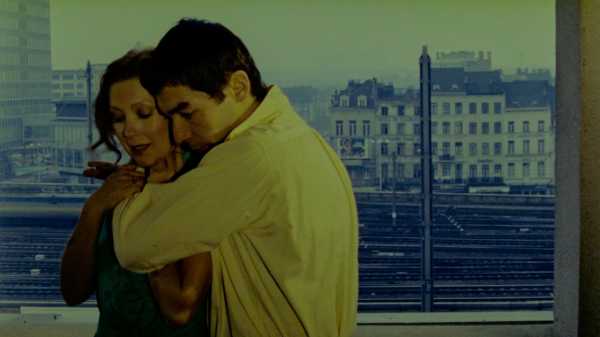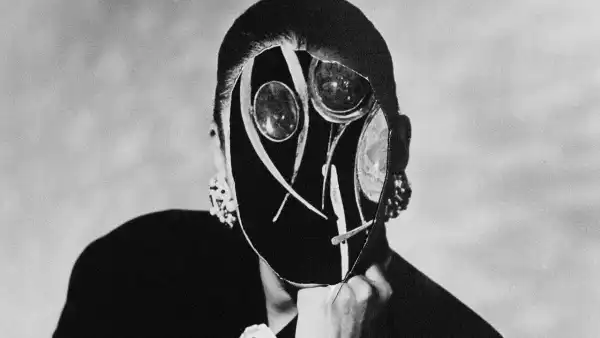
Save this storySave this storySave this storySave this story
When Chantal Akerman’s “Jeanne Dielman, 23 quai du Commerce, 1080 Bruxelles”—proclaimed the best film of all time in Sight and Sound’s 2022 poll—premièred at the Cannes Film Festival, in 1975, Akerman was twenty-four, and she got a raw deal. The movie’s acclaim as a masterpiece was immediate—by the relatively few people who didn’t walk out. It met with similar acclaim when it opened in France, the following year, and, then, after special screenings in the United States. Yet the film’s duration (more than three hours) and its austerity, its only oblique connections to familiar genres, left it, and Akerman, outside the ken of general audiences. (It wasn’t programmed by the New York Film Festival and had no U.S. release until 1983.) Nonetheless, Akerman was able to keep working consistently in the French and Belgian film worlds, and she knew that following up on that film would be a tall order. “I have achieved what I was looking for,” she told the American critic B. Ruby Rich, in 1976. “So I have to find another way. I have to look for something else, which I don’t know yet.”
In the following years, Akerman continued to make films at a vigorous pace, including, in 1980, the extraordinary documentary “Dis-Moi,” about female Holocaust survivors. But it was only in 1981, Year Six A.D. (After Dielman), that she devised an advance in narrative form to rival that of the earlier work—in the film “Toute Une Nuit” (“One Whole Night”). The conceptual breakthrough of “Jeanne Dielman” involves rendering a woman’s ordinary daily life—at home, in the kitchen—as inherently dramatic, history-rich, and choreographically exquisite. Akerman achieved her second breakthrough by conceiving a film in drastic contrast with the first. “Toute Une Nuit” follows not one character but many (it has a cast of seventy-five), and, during the single night of the title, they are seen in fragmentary microdramas that highlight not their banal routines but some of the most inherently melodramatic moments in any life; namely, romantic encounters.
Having never seen “Jeanne Dielman,” I saw “Toute Une Nuit” for the first time in Munich, in 1983, and recognized it at once as a masterwork. Back home in New York, I enthused about it for years. While, as far as I knew, it remained unseeable here, it took on a nearly mythic status in my mind, to the point where I even wondered whether rarity and memory had inflated its importance. Eventually, a special screening (at the Alliance Française, if I remember correctly) only confirmed and intensified my first impression. I’ve long wanted to write about “Toute Une Nuit,” but without tantalizing readers with an unavailable treasure. Happily, it’s now available to stream on the Criterion Channel, the closest thing to a wide release that an unfamiliar classic can get.
Like “Jeanne Dielman,” “Toute Une Nuit” is shot in Akerman’s native Brussels, but whereas the earlier film takes place mostly indoors and gets its city life mainly osmotically, “Toute Une Nuit” is set aswing with the urban whirl. It offers expressive and evocative views of street life and public spaces, and its images often unite interiors and exteriors, the home and the city at large, with views through and into windows, into and out of doorways. Few of the many characters in “Toute Une Nuit” are named. Most are seen only briefly, in situations that have little overt connection to their professional lives and their personal past; none of them has the historical depth of Akerman’s Jeanne. Instead, it’s love itself that has a history—and a choreography to go with it.
“Toute Une Nuit” is a visual catalogue of the physical rhetoric of romance, a docudramatic counterpart to Roland Barthes’s book “A Lover’s Discourse,” from 1977. Just as Barthes sees the subjectivity of romantic speech as figures that lovers adapt, borrow, and imagine their way into, so Akerman parses dramatic figures of romance—phone calls and door knocks, arrivals and departures, caresses and embraces, cab rides and hotel check-ins—and lends them a cinematic identity. The intimacy in Akerman’s film is a matter of structural poetry, of analytic rapture. The many performers are physically precise yet free, and they do most of their work with their bodies. (The dialogue is terse—few characters have more than a few brief lines, and many don’t talk at all.) Though the actors are acting, they have an undirected naturalness, as if Akerman were discovering their doings rather than staging them. Yet she frames action exactingly, producing a stark lyricism, as when a man and a woman, sitting silently side by side and nursing their drinks in a café, get up to leave and dash into each other’s arms as if in a head-on collision.
“Toute Une Nuit” is something of a musical, with plenty of actual dancing throughout: slow dances, in bars and at home, to romantic pop ballads (which recur through the film). Yet Akerman’s vision is choreographic in a broader sense, too: her inventive curiosity renders plain walking and running as the essential form of dance. Filming in a handful of workaday, unpicturesque neighborhoods, she catches her actors striding and dashing through the streets, rushing up staircases and sneaking down them. Together with the intimate gestures of touches and clinches, dialling phones and opening doors and windows, the comings and goings in “Toute Une Nuit” comprise a demotic choreography akin to that of Pina Bausch. (Reportedly, Akerman had seen Bausch’s work the year before “Toute Une Nuit”; and the year after it, she made her great documentary about the choreographer, “One Day Pina Asked . . . ”)
The passage of time itself, from twilight to dawn, is the movie’s main through-line, energized by the dramatic changes that a night of love can wreak. The power of one big night is highlighted by the recurrence of several characters in a series of mini-episodes that form delicate arcs. One, of a middle-aged woman sneaking away from home (and from a man) to check into a hotel alone has a wry poignancy of imaginative fancy; another, of an elderly man in his office, doing his bookkeeping through a lonely night, veers toward eerie tragedy; a third, of an insomniac man, is a tale of literary labor; another involves two men’s necessary separation. The longest tale features the actress Aurore Clément, who had previously played a kind of Akerman alter ego, in the 1978 drama “Les Rendez-vous d’Anna.” (Akerman’s middle name was Anne.) Her segments in “Toute Une Nuit” sketch a love triangle of a muted irrational fury that leads to a dance scene filled with the movie’s most copious dialogue, a stark set of lovers’ incantatory declamations. The scene plays like a variation on a theme by Marguerite Duras.
The movie’s action seems furtively observed, fictionally “overseen” in a visual equivalent to overhearing. To achieve this striking tone—the paradoxical way that actions seem serendipitous yet also comprehensively crafted—Akerman’s method is a sort of cinematic fishing. She waits intently, with the camera running, for the instant when, as it were, the actor bites—when the emotional buildup yields a gesture so crucial that it feels like an inevitability. Line-sharp pan shots and tensely exact still framings convey a severe unity of visual thought, a sense of rigor without rigidity, of composition in images that has the complex poise of a piece of music. Along with the hyper-refinement of graphically witnessed gestures, the movie offers wry humor, as when two young men want a woman to choose between them (and she does exactly that), and physical comedy, when another couple leaves a café together so brusquely that their beers spill, in a Busby Berkeley-esque uniformity. The history that “Toute Une Nuit” elicits is, first of all, cinematic, with the deep shadows, high-contrast light, and lurid colors of that nocturnal cinema par excellence: film noir.
“Toute Une Nuit” is as thoroughly designed in its sensuous details as in its visual and dramatic schemas. The old-school formality of the costumes—women in dresses, men with ties—is counterbalanced by the flamboyance of their colors: flaming red, screeching green, lavish blue, acerbic yellow, judgmental white, which inflect the action’s moods and set its tones. There’s no musical score, because each of these dashings and stridings, trottings and lurchings comes with its own percussive soundtrack of shoes clacking on floors and in streets, knocks and doorbells, doors opening and closing, chairs scraping, cars arriving, car doors slamming, motors roaring, the rumble of thunder, the rustle of a newspaper, the clatter of an adding machine—all the tiny noises that are amplified by the nocturnal darkness. Even the comings and goings of taxis are part of this hot summer night’s erotic synchronicity, timed to the magnetic attractions and repulsions of desire.
The decisiveness and the intimacy of the action, along with the abrupt intercutting of the roundelay of events and settings, keeps the movie brisk, stoking a sense of quiet fervor. The movie crams its many nights of love into a mere ninety-one minutes, and unlike the three-hour-plus “Jeanne Dielman,” which, Jessica Winter wrote on this site, “can be intensely, maddeningly, and hilariously boring,” “Toute Une Nuit” is a nondemagogically entertaining, minimal-action film. Its film-noir visual palette matches the melodrama implicit in its stories. Akerman’s lovers are neither shy nor flamboyant but outwardly, practically assertive about the inner drives of their passions. Jean Cocteau famously wrote that there’s no love—there’s only proof of love, and Akerman is love’s most diligent and forensically persuasive detective.
Akerman kept going with musicals and with romance, as in the Bausch documentary and the exuberant (and history-laden) musical “Golden Eighties.” She made documentaries and self-portraits, whimsical comedies and trenchant short films: the grand melodrama “La Captive,” fusing Proust and Hitchcock; and, for her final film, “No Home Movie,” one of the most agonizing works of personal cinema. But “Toute Une Nuit” is her most exquisite, most compressed, most refined, and most intricate film. Here, too, she achieved what she was looking for and then proceeded to search elsewhere. Her restlessness meshes with her curiosity, her wide-ranging inventiveness with her risk-taking. With the force of this artistic personality, Akerman did more than direct one of the greatest movies of all time; she had one of the greatest cinematic careers, an œuvre that’s troubled only by unavailability. ♦
Sourse: newyorker.com







